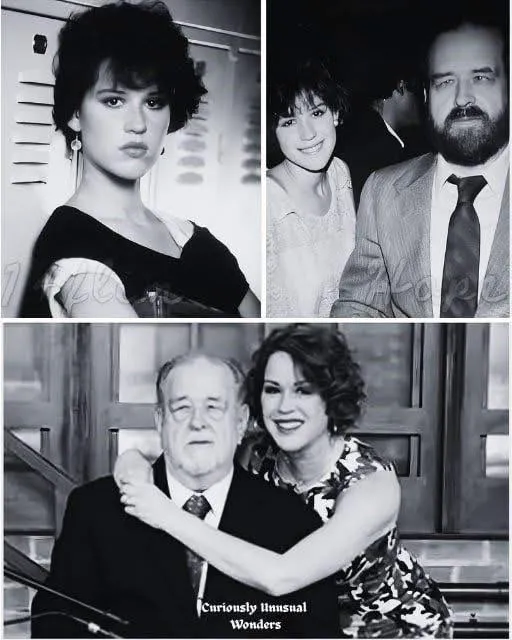The Owl You Cannot See: Nature’s Camouflage Master Revealed 938

On the rough surface of a tree trunk, where cracks and shadows form a natural mosaic, the Eastern Screech Owl becomes almost invisible. To the untrained eye, it might look like just another patch of bark. Yet there it sits—alive, watchful, and nearly undetectable—a marvel of camouflage that has fascinated naturalists for generations.
The Eastern Screech Owl, Megascops asio, is a small but formidable predator found throughout much of North America. By night, it is a hunter, gliding silently through forests in search of insects, small mammals, and even the occasional fish. By day, however, survival demands invisibility. That is where its mottled plumage, a perfect blend of greys, browns, and whites, plays its vital role.
Unlike some animals that rely on speed or armor, the screech owl’s greatest defense lies in stillness and disguise. When perched against tree bark, its feathers mimic the ridges, cracks, and color variations of wood so precisely that even seasoned birdwatchers struggle to spot it. To predators like hawks and to prey like mice, it simply vanishes into the landscape.
Evolution has fine-tuned this adaptation over millennia. Owls that blended in best were less likely to be seen and attacked, and more likely to survive long enough to reproduce. Today, the Eastern Screech Owl’s camouflage stands as one of nature’s most successful strategies—proof that survival often favors subtlety over strength.

The effect is so uncanny that field researchers often describe moments of sudden revelation: what looked like a hollow in the tree blinks, shifts slightly, and reveals itself as an owl. That jolt of recognition underscores just how powerful natural selection can be in shaping creatures to match their environment.
In the image in question, the owl perches not on a tree but on a gloved hand, suggesting it may be a rescue animal or part of an educational program. Such encounters are rare opportunities to see, up close, the details of a bird normally hidden in plain sight. The delicate mottling of the feathers, the cryptic patterns of white streaks and grey swirls—all become visible in ways they are not when the bird melts into the forest background.
Rescue and educational programs often rely on birds like this to inspire public awareness. While camouflage protects the owl in the wild, human activity—cars, habitat loss, window strikes—still threatens them. By allowing people to see and learn from a living owl, conservationists hope to foster respect for the ecosystems that sustain them.
But the lesson is not limited to one species. Camouflage is a recurring theme in nature, from leaf insects and stick caterpillars to Arctic hares whose coats change with the seasons. Each example tells the same story: survival depends on adaptation, and adaptation often means disappearing into the environment.
For the Eastern Screech Owl, camouflage also enhances its hunting success. At dusk, when light is fading, it can perch motionless, waiting for unsuspecting prey to pass by. With its form hidden against the bark, it strikes with sudden precision. The prey never knew it was being watched.

To humans, the owl’s disguise is both practical and poetic. It speaks to the ingenuity of evolution, but it also captures something more mysterious: the idea that the world is full of hidden lives, invisible until we learn how to look. How many times have we walked past a tree without realizing an owl was sitting there, watching silently?
The owl’s mastery of concealment also challenges our assumptions about visibility and power. Unlike the lion’s roar or the eagle’s soaring flight, its survival is built not on dominance but on subtlety. Its greatest strength is in being overlooked.
Photographs of camouflaged owls often go viral online, sparking amazement and disbelief. Viewers squint, searching for the outline of the bird against the bark, only to gasp when its eyes suddenly reveal themselves. That thrill of discovery is part of the owl’s enduring fascination.
But beyond entertainment, such images serve as vital reminders of biodiversity’s fragility. The habitats that allow owls to hide—the forests, the old trees, the undisturbed hollows—are under pressure from logging and urban expansion. Protecting these spaces is as essential as marveling at the creatures they shelter.
Educational programs featuring owls like the one on the gloved hand bridge that gap. They connect people to wildlife, offering direct encounters that statistics and textbooks cannot replicate. Looking into the bright, unblinking eyes of an owl, even for a moment, can spark a lifelong respect for conservation.
For children especially, seeing how perfectly an owl disappears into bark can ignite curiosity about science and ecology. It raises questions about how animals live, adapt, and survive. It transforms the abstract idea of evolution into something tangible and immediate.
In many cultures, owls are symbols of mystery, wisdom, or omens. The Eastern Screech Owl, with its ghostly call and vanishing act, fits this role perfectly. It embodies both the seen and unseen, the known and the hidden. It invites us to pay closer attention, to notice what lies just beyond our perception.
Ultimately, the story of the Eastern Screech Owl’s camouflage is a story about balance. It reminds us that nature thrives not just in the spectacular—like migrations or battles—but in the quiet art of invisibility. To survive, sometimes the best strategy is to be unnoticed.
And so, as Roland the elephant seal once reminded us of enrichment, or Ginger the lion of resilience, the Eastern Screech Owl teaches us another lesson: that survival can be found in stillness, patience, and the ability to disappear.
Because in the end, the owl’s vanishing act is more than a trick of the eye. It is nature’s way of whispering that the world is always more alive, more complex, and more hidden than we think.
She Was Just 15. Her Father Said No—and Changed Everything. 24


Hollywood in the 1980s was a machine of bright lights and box office dreams, where teen comedies defined a generation and young actors were vaulted into overnight fame. But beneath the neon gloss and laughter, troubling norms simmered just below the surface. Few spoke of them. Even fewer dared to challenge them.
One man did.
In 1983, Molly Ringwald was just 15 years old when she landed the lead role in Sixteen Candles, a film that would cement her as America’s teenage sweetheart. The movie, directed by John Hughes, would go on to define the decade’s teen cinema. Yet in its earliest form, the script held a disturbing detail—a scene that suggested Molly’s underage character would appear nude. Subtle, but unmistakable. And for anyone who read closely, deeply unsettling.
One person read closely: her father.
Robert “Bob” Ringwald, a blind jazz pianist and Molly’s fiercest protector, combed through the script with the care of a man who knew Hollywood could be ruthless. What he found ignited immediate alarm. There was no hesitation, no compromise. He told the filmmakers flatly, “Absolutely not. You’re not doing this to my daughter.”
In that moment, he wasn’t just protecting his child. He was exposing a dangerous pattern—the casual sexualization of teenage girls in the name of entertainment. While others might have looked away, or rationalized it as “harmless,” Bob drew a clear line.
Molly would later call it a defining moment in her young career. “If that scene had stayed,” she told The New Yorker, “it would’ve haunted me forever. I’m really grateful he did that.”
Her father’s refusal wasn’t loud or dramatic. It was quiet, firm, and immovable—the kind of protection that gave Molly not just safety in the moment, but a framework for the future. She learned that no role, no script, no opportunity was worth her dignity.
As her career soared with The Breakfast Club and Pretty in Pink, Molly became a symbol of the Hughes era. But decades later, with the rise of the MeToo movement, she began reassessing those iconic roles. In 2018, she published a powerful essay, What About The Breakfast Club?, in which she reflected on the troubling themes woven into films that audiences once consumed without question. Watching Sixteen Candles with her own daughter, she admitted, forced her to confront how those films blurred boundaries and normalized harmful stereotypes. “I don’t think John Hughes meant harm,” she wrote. “But there are things that don’t sit right with me today.”

That scene her father stopped never appeared on screen. But its shadow lingers as a symbol of what could have been—and of the countless moments that did slip past unchecked in Hollywood. Molly now sees, with the clarity of both time and motherhood, what her father recognized instantly: the danger of shaping a culture where the exploitation of young girls could be laughed off as comedy.
Bob Ringwald passed away in 2021. His legacy as a jazz musician lives on in clubs and recordings, but his greater legacy may be the one he left with his daughter: the courage to say no, to question what others accept, and to hold firm to dignity when it’s most at risk. “He had my back,” Molly said. “When it would’ve been easy to just go along with things—he never let me.”
It is easy to measure a career in roles, in awards, in box office numbers. But sometimes, the most important moment is the one that never happens. For Molly Ringwald, that unfilmed scene—and her father’s refusal—may have been the most important turning point of all.
A blind father reading a script. A 15-year-old daughter spared a lifetime of regret. A single word—no—echoing through decades as both protection and lesson.
Sometimes, the quietest rebellions change everything.





